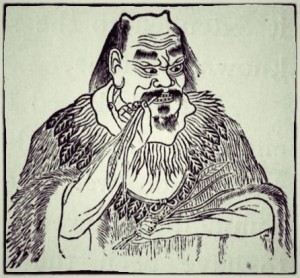Channels & Collaterals
- Qi & blood circulate via channels.
- Qi manifests and maintains the body’s normal functions.
- Blood provides nourishment and substance.
- The channel system includes channels (larger rivers & seas) and collaterals (smaller streams and branches).
Functions of Channels & Collaterals
1. Integrate the whole body as a network:
- Connect Zang and Fu to one another.
- Allows communication of interior and exterior.
- Links each part of the body to all other parts, making an organic whole.
2. Circulate qi and blood to all organs and tissues:
- Provides nourishment and lubrication to organs and tissues.
- Regulates function and physiology.
- Maintains homeostasis.
3. Demonstrate the location of disorders:
- Aid in diagnosis.
- Any abnormality along a channel pathway or at a point can indicate imbalance.
- Disease can appear as tenderness, swelling, or discoloration.
4. Transmit needle sensation:
- Needle sensation is transmitted via channels and collaterals to organs or diseased areas.
Components of the Channel & Collateral System:
Channels System:
- 12 Regular channels that “pertain” to their own organs and “connect” to their paired organs.
- 12 Divergent channels which are branches of the regular channels that reinforce Zangfu connections.
- 12 Sinew (Tendinomuscular) channels are external branches of the regular channels that connect with joints, muscles, tendons, and ligaments.
- 12 Cutaneous regions are the most superficial of the channels that circulate qi and blood to the body surface, nourish the skin and pores, and protect the body from external pathogens.
- 8 Extraordinary channels
Collateral System:
- 16 Luo collaterals
- Minute branches (grandson channels)
- Superficial collaterals
- Blood collaterals
Nomenclature
Each regular channel is named by:
- The organ to which it pertains
- Yin or Yang nature
- Distribution (medial/lateral, anterior/posterior)
- Either hand or foot
- For example: Lung Hand Tai Yin
- Each collateral, divergent, and luo is named for the primary channel from which it branches.
- Each of the eight extraordinary channels has its own name associated with function.
Primary Channels
Taiyang: less qi, more blood Shaoyang: more qi, less blood Yangming: abundant in both qi and blood Taiyin: more qi, less blood Shaoyin: more qi, less bloodJueyin: less qi, more blood
- The six Yang channels meet at the head and face.
- The six Yin channels meet at the chest.
- The Yin and Yang channels of the hand meet at the hand.
- The Yin and Yang of the foot meet at the foot.
Points are where Qi and blood converge at the body surface.
Channel Pathology
- Yin channels dominate disorders of the pertaining Zang organs.
- Yang channels dominate disorders of other structures.
- Large Intestine channel: Jin & Ye body fluids
- Small Intestine channel: Ye body fluids
- San Jiao channel: Qi
- Stomach channel: Blood
- Gallbladder channel: Bone
- Urinary Bladder channel: tendons & ligaments
Clinical Applications
The points of each channel have effects along the channel’s area of distribution. All points can be used for local disorders or symptoms, regardless of channel.
The farther, the furtherDistal points have a greater area of influence and tend to affect the opposite ends of the channel. This is especially true of points on the extremities, distal to the elbows or knees.
The nearer, the closerPoints on the head, face, and trunk are usually limited local actions.
The basic principles that apply to a primary channel also apply to other channels and collaterals.

